Pentium 60 | ancientelectronics
Machines based around the socket 4 Pentium-60 and 66 make for a fairly fun and unique DOS computer. They have the FPU power of the Pentium yet are slow enough that they will run most DOS games meant for the ubiquitous 486-66DX2. As neat as a socket 4 system is (If you want to read about one check out an article I wrote on the subject here) They can be pretty expensive and hard to find these days. The earliest Pentiums also have their fair share of quirks and can be unreliable. With this project I wanted to make a Pentium based system as cheap as possible and as close to the performance as possible to the original Pentium-60 and Pentium-66. The main goal of this PC will be to play early 90’s 2D DOS games and applications as well as early Windows games. Of course a lot of this can be achieved with a faster CPU and slow down programs or disabling various caches in BIOS to slow down a CPU but that’s not really my style so were going to create a PC based around the next logical option if you can’t acquire a socket 4 board which is the Pentium-75.
The Pentium-75 was released in September of 1994 for the new socket 5 but it is also compatible with the newer socket 7 form factor when it was later released. Unlike the 5v Pentium-60 and 66 the Pentium-75 ran on 3.3v and was cooler running and much more reliable. That said with this build we are going for a mostly 1994-95 look and feel for this project. My focus is using mostly period parts when I can for a decent DOS and Windows 3.1/95 PC with an emphasis on 2D gaming rather then early 3D. I’m not necessarily trying to make this project an “ultimate” build for the era, just something that feels appropriate. This also lets me experiment with different hardware.
The case I decided to use for this project is a little beat up but I think it has the right look for this machine and I wanted to go with a desktop style for this build. I would of liked to add a 5 1/4 1.2mb floppy drive but unfortunately the holding brackets for the two vertical 3 1/2 bays are missing so I could not mount anything for them forcing me to use only the three 5 1/4 bays. I had to use the middle bay to mount the hard drive as no other space was available for mounting. I wish I had another one of those 1.4mb / 1.2mb combo floppy drives or 3 1/3 floppy / CD combo drives available. The HDD I’m using is a older drive of about 3gb, thankfully the BIOS in on this motherboard supports larger drives and I am able to use a full 2gb in DOS. I did go with a newer 32x CD drive since I can’t find any IDE CD drives from that time frame in my stash that work but this drive operates just fine if not a bit loud. I’ve also adjusted the jumpers on the frontal LED display to illuminate a pleasant “75” when power is turned on via the power button. Under the LED display are two more buttons for turbo and reset. Turbo features rarely if ever work with Pentium CPU’s and not to long after the 486 era the jumpers stopped appearing on motherboards.
I had to use the middle bay to mount the hard drive as no other space was available for mounting. I wish I had another one of those 1.4mb / 1.2mb combo floppy drives or 3 1/3 floppy / CD combo drives available. The HDD I’m using is a older drive of about 3gb, thankfully the BIOS in on this motherboard supports larger drives and I am able to use a full 2gb in DOS. I did go with a newer 32x CD drive since I can’t find any IDE CD drives from that time frame in my stash that work but this drive operates just fine if not a bit loud. I’ve also adjusted the jumpers on the frontal LED display to illuminate a pleasant “75” when power is turned on via the power button. Under the LED display are two more buttons for turbo and reset. Turbo features rarely if ever work with Pentium CPU’s and not to long after the 486 era the jumpers stopped appearing on motherboards.
Nothing special about the rear of this case and it’s mostly as one would expect from an AT style case.
Taking off the cover reveals the innards of this particular PC.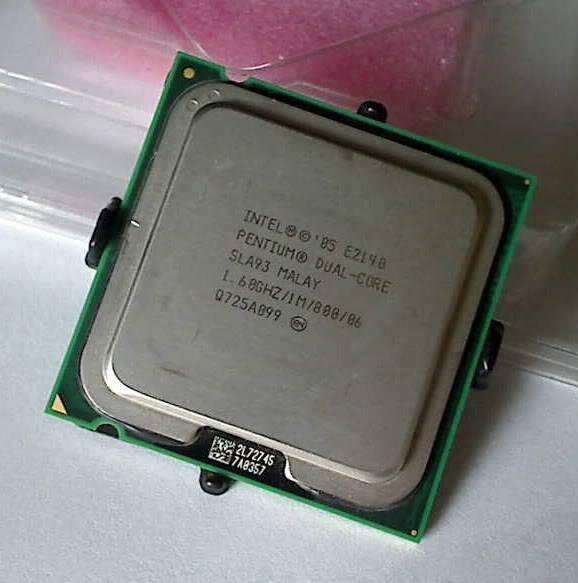 I originally wanted to go with Socket 5 for this build but lacking a working socket 5 board I opted for a slightly newer AT style socket 7 board. I suspect running this chip on a socket 5 board possibly would of given slower results but this of course depends on boards and chipsets. Even though the faster Pentium-75 has an advantage of a slightly newer architecture and a 9mhz clock bump I was very curious how much of an effect the lower 50mhz FSB of the Pentium-75 with a 1.5 multiplier would have on it compared to the Pentium-66 running on its 66mhz FSB.
I originally wanted to go with Socket 5 for this build but lacking a working socket 5 board I opted for a slightly newer AT style socket 7 board. I suspect running this chip on a socket 5 board possibly would of given slower results but this of course depends on boards and chipsets. Even though the faster Pentium-75 has an advantage of a slightly newer architecture and a 9mhz clock bump I was very curious how much of an effect the lower 50mhz FSB of the Pentium-75 with a 1.5 multiplier would have on it compared to the Pentium-66 running on its 66mhz FSB.
As you can see above there is no way to mount anything at the two 3 1/2 cutouts.
The Motherboard I’m using for this build is an Aptron International PM-8600. This is an AT style Socket 7 board with 512kb of L2 cache on the motherboard as well as supporting up to 512MB of EDO RAM in either 72 or 168 pin slots. There is built in support for four IDE devices via an ATA-33 controller. The board also sports four 16-bit ISA and four PCI slots for expansion. I feel the overall look and capabilities of this board fit the mid 90’s era we’re shooting for.
I feel the overall look and capabilities of this board fit the mid 90’s era we’re shooting for.
Now that we know the motherboard we are using for this project lets take a look at the other components.
CPU – Obviously the CPU we are using is the Intel Pentium-75mhz. This CPU came out in 1994 and was really seen as the first reliable and “serious” Pentium chip as the earlier Pentium 60/66 chips had issues with reliability and heat. This CPU should be as fast as the fastest 486 chips with superior FPU performance. The Pentium-75 operates on a lower 50mhz FSB utilizing a 1.5 multiplier as opposed to the 60 and 66mhz FSB of the earlier Pentiums running at the same speed as the FSB.
(image courtesy of Wikipedia)
some models of the Pentium-75s came with the same gold top as the earlier Pentium 60/66. even though with a mounted heatsink/fan this makes no aesthetic difference compared to a Pentium with a ceramic top I happened to have a gold top CPU so this is what I used in this build.
RAM – The PM-8600 board supports both 72 pin DRAM as well as 168 pin SDRAM RAM as well as the faster EDO RAM variant. I went with 32mb of 72 pin EDO RAM for my build. 32mb is more then enough memory in most cases for the 94/95 era. Using 168 pin SDRAM is likely much easier to find, faster and cheaper then 72 pin so it’s nice to have that option for those looking to construct a similar build but I opted for the older 72 pin variant simply due to the fact I had extra in my stash and it gave the machine a more internally oldschool look.
Video – For a video card in this PC I wanted to experiment a little and try a few different cards outside of my “go to” cards. I also wanted to specifically go for a 2D PCI card without any 3D capabilities as in the mid 90’s combined 2D/3D cards hadn’t completely taken off yet and many early PCI cards were produced that were 2D only though you could pair them with early 3D accelerator cards like the Voodoo 1 and 2.
The video card I went with for this build ended up being the ATI Mach64 released in 1994. Despite the Mach64 being one of the more sought after ISA and VLB cards the PCI implementation as my chart will show shortly is certainly not the fastest early PCI card but it is pretty well known.
Despite the Mach64 being one of the more sought after ISA and VLB cards the PCI implementation as my chart will show shortly is certainly not the fastest early PCI card but it is pretty well known.
As I mentioned earlier I wasn’t necessarily going for the “best” parts for this era and I did want to experiment a little. ATI whom eventually was bought out by AMD is known for making some pretty good video cards throughout the 1980’s and 90’s and the Mach42 and 64 were known to be pretty decent 2D accelerator cards when running in Windows 3.1 and Windows 95. As for DOS games the Mach64 scored dead last in my benchmarks when put up against several other 2D PCI cards from the era.
Benchmarks performed on the Aptron International PM-8600 motherboard with a Pentium-90mhz. ATI Mach42 also tested but statistically identical to Mach64. All tests done using “vanilla” results without the aid of enhancement programs such as FastDOS
In all of my benchmarks the Mach64 fell behind similar offerings from Tseng Labs, IGS and S3. I have also read sources that claim the Mach42/64 cards have hit or miss compatibility with certain DOS titles producing graphical glitches. Though this is true with all cards with S3’s offerings widely sighted as the king when it comes to compatibility the Mach42/64 series and ATI cards in general may be a little worse overall. So far with my own testing I have seen no graphical issues though the number of games I’ve tested have been relatively small. As mentioned earlier though usage in Windows 3.1 and 95 should be good. I can confirm myself that when using the card under Windows performance in the GUI felt snappy.
I have also read sources that claim the Mach42/64 cards have hit or miss compatibility with certain DOS titles producing graphical glitches. Though this is true with all cards with S3’s offerings widely sighted as the king when it comes to compatibility the Mach42/64 series and ATI cards in general may be a little worse overall. So far with my own testing I have seen no graphical issues though the number of games I’ve tested have been relatively small. As mentioned earlier though usage in Windows 3.1 and 95 should be good. I can confirm myself that when using the card under Windows performance in the GUI felt snappy.
Keep in mind like many cards there were variations of the Mach64 offering more and faster video RAM as well as minor chip revisions. There seems to be at least eight major chipset variations for the Mach64. I have the GX variant which offers enhanced video playback capabilities over the original card. I went with this card despite the alleged deficiencies because overall it still performs adequately and I was not going for a power machine. In the case of this build the slower FPS produced by the Mach64 actually helps to keep this machine in line with our late 486 era / Pentium-66 performance goals.
In the case of this build the slower FPS produced by the Mach64 actually helps to keep this machine in line with our late 486 era / Pentium-66 performance goals.
Sound – I really struggled with choosing a sound card for this system as I wanted something that felt correct for the era but I also wanted to experiment a little with different cards. In the end though I went with a good old Sound Blaster 16 CT1740. This is an older SB16 with manual jumpers to configure settings and a dial to control volume. The CT1740 is a fairly “noisy” card so prepare for buzzing at higher volumes as well as an assortment of “pops” now and then during game play. despite the “noisiness” I find myself liking it very much and it tends to “just work” with very minimal setup hassle. The card features a true OPL FM chip for FM synth and has pretty good compatibility with older games that supported the Sound Blaster Pro. Usually the CT1470 is free of the dreaded hanging midi bug though mine has DSP ver 4.7 so unfortunately mine does, though I was able to get around this by adding a midi card which we will take a look at next.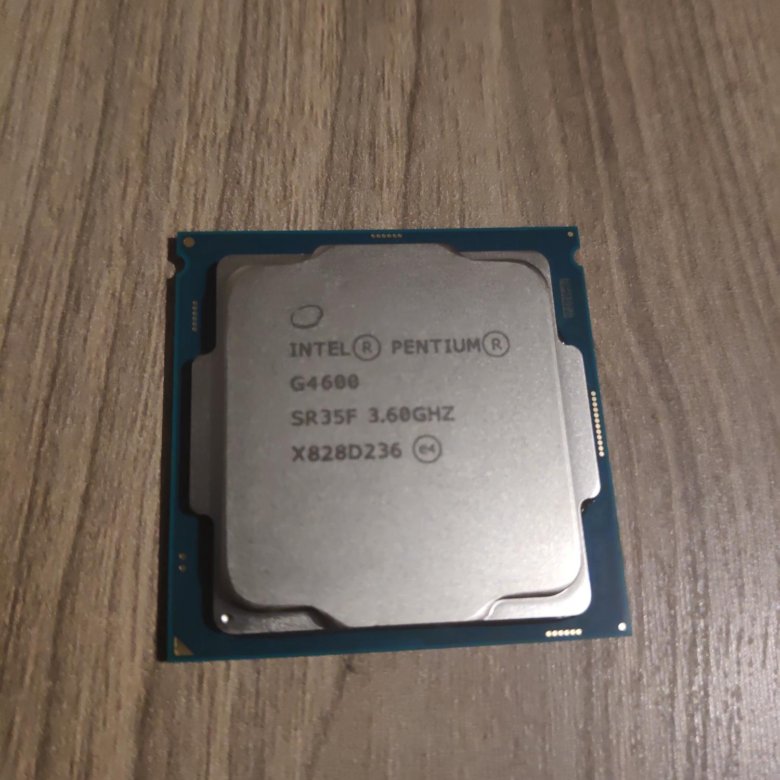
The empty socket is for the ASP chip and the vast majority of older Sound Blasters seem to lack this chip. The capabilities of this chip were only used in one game to the best of my knowledge. That game being the 1993 DOS title TFX: Tactical Fighter Experimental, so we’re not really missing out on much due to its absence. You can check here to get a guide on how to set your jumpers to fit your requirements.
MIDI – When it comes to midi, whether using a wavetable board or an external module my CT1470 does have a few issues. One is since my card does have a later DSP version it does suffer from hanging midi notes though keep in mind that cards with DSP version 4.5 and lower will be bug free. The other issue with all of the Sound Blaster cards is that they do not support games that require “intelligent mode” which includes many high profile games. There are software solutions such as SoftMPU but this creates a small amount of processing overhead and I just tend to prefer hardware solutions when available.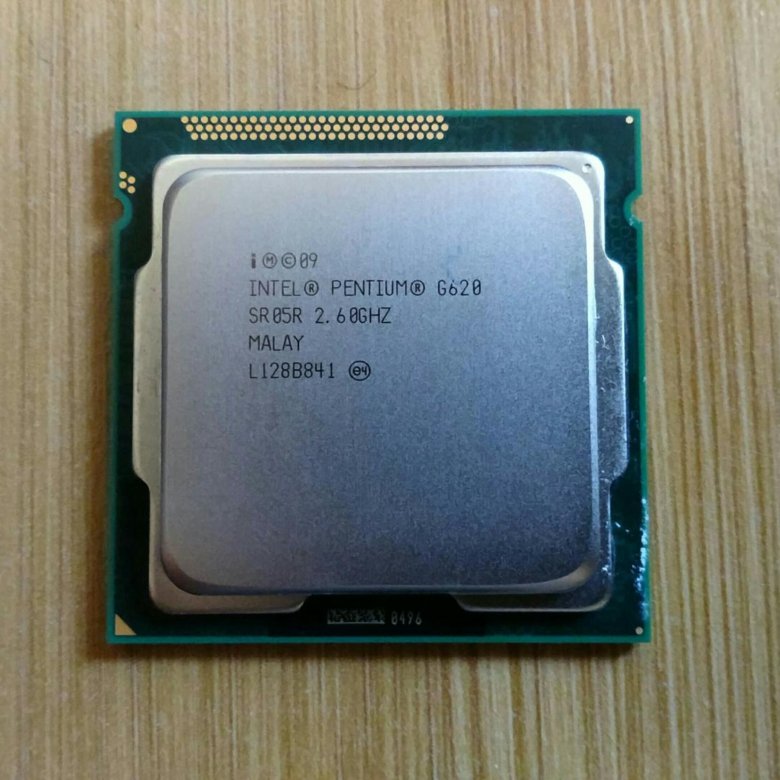 Midi support in my opinion is pretty important for this PC since a huge amount of games supported MT-32 and General Midi standards by the mid 1990’s.
Midi support in my opinion is pretty important for this PC since a huge amount of games supported MT-32 and General Midi standards by the mid 1990’s.
The midi card I had available and opted to install in this machine is the Music Quest MQX-32m.
Music Quest MQX-32m with dongle
The MQX-32m is a Roland MPU compatible midi clone card meaning that it basically works just like if you were using a true midi card from Roland. I run this card along side the sound blaster to handle all my midi needs via external midi modules while the Sound Blaster 16 handles digital effects as well as FM synth. The MQX-32m supports games that require intelligent mode and suffers from no hanging midi bugs. It is important to note that this clone card is not 100% compatible and some Origin games such as Wing Commander will lock up when you attempt to run them using this card. Since the focus of this build is later games (due to the high CPU speed Wing Commander would be unplayable on this machine anyways) I’m not very concerned with the compatibility and this card should work fine with just about every game this PC is intended for.
The MQX-32m is a very interesting card as it supports many features and even has two Zilog Z80 chips for dual midi output. The bulk of these features though many of which I have no idea what they do are more geared to music applications so for our purposes it’s good enough that the card supports intelligent mode midi and solves all our midi issues that using the Sound Blaster alone would of created. I currently have my MQX-32m configured as address 330 and IRQ 2, being careful to not conflict with my Sound Blaster 16 card settings. a chart detailing how to set the DIP switches to select those settings can be found here.
So now that we have looked over all our hardware how does this machine perform and also how does its performance stack up to my socket 4 66mhz PC? Lets take a look at the benchmarks.
As we can see from the benchmarks that despite a slightly lower overall Front Side Bus the newer Pentium-75 pulls ahead in all tests. In games though the performance boost isn’t terribly noticeable as the boost is generally around or under 5 FPS.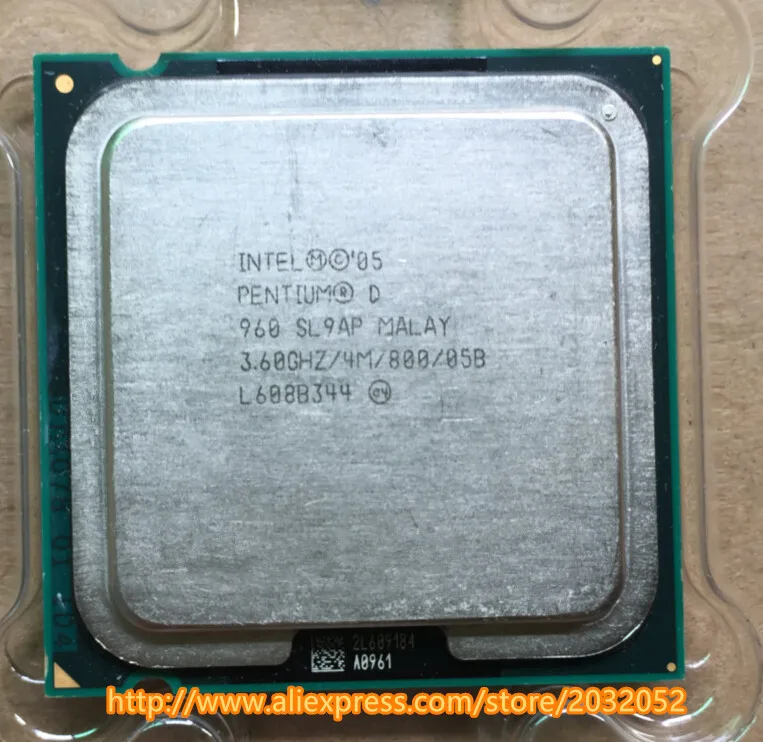 In some games where the FPS is lower like Quake the extra 5 FPS is far more noticeable then say DOOM where both machines are pulling 30+ FPS. Synthetic benchmarks tend to favor the Pentium-75 more but those kind of results are usually expected from synthetics. As I mentioned earlier you can get somewhat different results depending on what motherboards you use but I feel results will generally follow the trend above. These results seem to indicate that gaming on a Pentium-75 machine should give a more or less similar experience to gaming on a Pnetium-66 machine without the headaches and with significantly lower cost involved.
In some games where the FPS is lower like Quake the extra 5 FPS is far more noticeable then say DOOM where both machines are pulling 30+ FPS. Synthetic benchmarks tend to favor the Pentium-75 more but those kind of results are usually expected from synthetics. As I mentioned earlier you can get somewhat different results depending on what motherboards you use but I feel results will generally follow the trend above. These results seem to indicate that gaming on a Pentium-75 machine should give a more or less similar experience to gaming on a Pnetium-66 machine without the headaches and with significantly lower cost involved.
For some more comparisons I decided to also make a chart including results from my Pentium-66 PC with my preferred PCI ET6000 card installed.
From looking at the tests the ET600 makes a pretty big difference and in many places helps close the gap with the Pentium-75 machine. Gains in Quake are very modest which makes sense as I believe that game to be more CPU intensive then video card.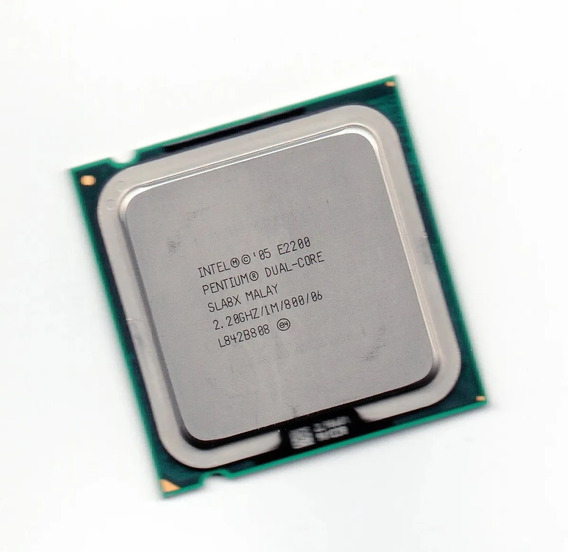 I wasn’t able to test the card in the Pentium-75 PC due to the fact that when installed the machine failed to move past POST and would produce a black screen regardless of how I manipulated settings in the BIOS. The card did work when I had a faster Pentium-90 installed and although I haven’t gone back and reinstalled that CPU to test this theory my best guess is that my ET6000 just doesn’t like the 50mhz FSB the board uses with a Pentium-75 installed. Interestingly my S3 cards also fail to work on this board when a Pentium-75 is installed while my ATI Mach cards as well as my IGS card work flawlessly.
I wasn’t able to test the card in the Pentium-75 PC due to the fact that when installed the machine failed to move past POST and would produce a black screen regardless of how I manipulated settings in the BIOS. The card did work when I had a faster Pentium-90 installed and although I haven’t gone back and reinstalled that CPU to test this theory my best guess is that my ET6000 just doesn’t like the 50mhz FSB the board uses with a Pentium-75 installed. Interestingly my S3 cards also fail to work on this board when a Pentium-75 is installed while my ATI Mach cards as well as my IGS card work flawlessly.
Overall I think this machine achieves its goal of being a mid 90’s PC very well and comes very close to approximating the feel and performance of an original Pentium with none of the fuss. Of course the video card can be upgraded to a faster 2D card or even a 3D card if you so choose. I find performance with early 90’s titles like Doom and Wolfenstein 3d to be rather good. Even games like Quake can be somewhat playable at lower resolutions if sub 30 frame rates don’t bother you to much.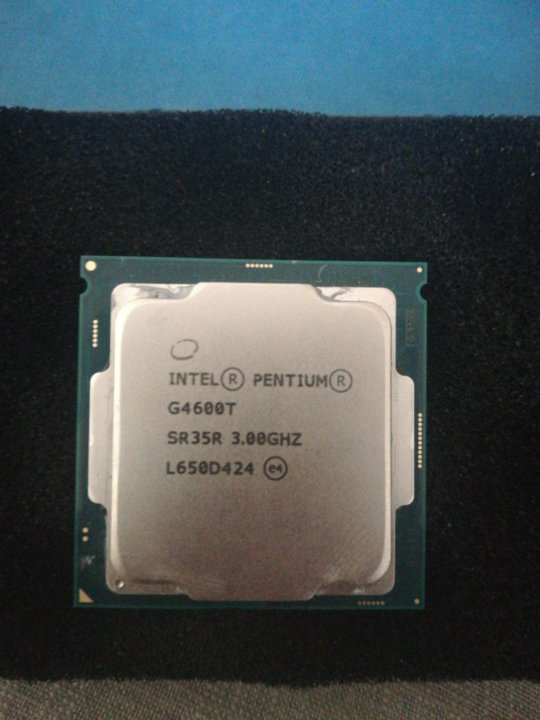 I’ve also been playing a lot of slower paced strategy games like Panzer General on this machine which it handles perfectly. I have found even a Pentium-90 plays the movie clips in Panzer General a bit to fast but on the Pentium-75 everything seems to play at the correct speeds and game play is very fluid. Windows 3.1 and Windows 95 feel fairly snappy to navigate overall and I haven’t run into any major issues.
I’ve also been playing a lot of slower paced strategy games like Panzer General on this machine which it handles perfectly. I have found even a Pentium-90 plays the movie clips in Panzer General a bit to fast but on the Pentium-75 everything seems to play at the correct speeds and game play is very fluid. Windows 3.1 and Windows 95 feel fairly snappy to navigate overall and I haven’t run into any major issues.
There isn’t any super compelling reasons to specifically build a Pentium-75 PC on its own if all you want is a retro game machine. If you want a more classic PC for retro gaming then a 486 system is advised and if you want a retro rig with a little more power then why not go for a Pentium-133 or 166mhz with a 3d capable card? That said if you want to build one just for the experience or maybe due to nostalgia for a 75mhz PC you had in earlier years it will still make a very serviceable retro machine capable of playing a large amount of games from the later DOS and early Windows years.
Like this:
Like Loading…
Intel Pentium 60 — A80501-60-WWW.NBCPU.COM
We specialized in CPU trade, contact us if you need bulk sale or purchase this kind of CPU,please do not hesitate to contact us :
Email :[email protected],Tel: +86 0755-82928539
| Type:CPU | Manufacturer:Intel |
| family:Pentium | microprocessors:Intel Pentium 60 — A80501-60 |
| Type | CPU / Microprocessor | ||||||||||||||||||||||||||||||||||||||||||||||||||
| Market segment | Desktop | ||||||||||||||||||||||||||||||||||||||||||||||||||
| Family |
Intel Pentium |
||||||||||||||||||||||||||||||||||||||||||||||||||
| CPU part number |
|
||||||||||||||||||||||||||||||||||||||||||||||||||
| Frequency | 60 MHz | ||||||||||||||||||||||||||||||||||||||||||||||||||
| Bus speed | 60 MHz | ||||||||||||||||||||||||||||||||||||||||||||||||||
| Clock multiplier | 1 | ||||||||||||||||||||||||||||||||||||||||||||||||||
| Package | 273-pin ceramic Pin Grid Array 2. 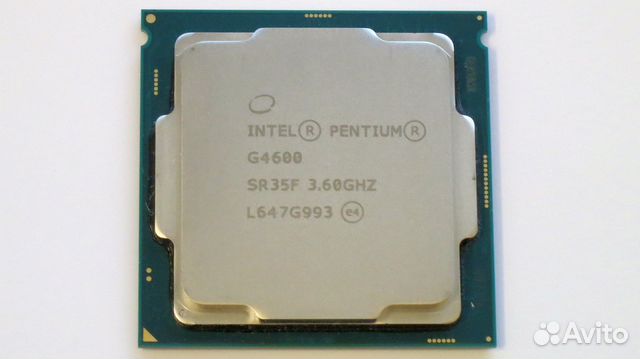 16″ x 2.16″ (5.49 cm x 5.49 cm) 16″ x 2.16″ (5.49 cm x 5.49 cm) |
||||||||||||||||||||||||||||||||||||||||||||||||||
| Socket | Socket 4 | ||||||||||||||||||||||||||||||||||||||||||||||||||
| Introduction date | 22-Mar-93 | ||||||||||||||||||||||||||||||||||||||||||||||||||
| ICOMP index | 510 | ||||||||||||||||||||||||||||||||||||||||||||||||||
| Upgrade options | Pentium overdrive 133 | ||||||||||||||||||||||||||||||||||||||||||||||||||
| S-spec numbers | |||||||||||||||||||||||||||||||||||||||||||||||||||
|
|||||||||||||||||||||||||||||||||||||||||||||||||||
| Architecture / Microarchitecture | |||||||||||||||||||||||||||||||||||||||||||||||||||
| Microarchitecture | P5 | ||||||||||||||||||||||||||||||||||||||||||||||||||
| Processor core | P5 | ||||||||||||||||||||||||||||||||||||||||||||||||||
| Core steppings | B1″ (Q0412, SX753) B1′ (Q0352, Q0394, Q0400) C1 (Q0466, SX835, SZ949) D1 (Q0625, SX948, SX974) |
||||||||||||||||||||||||||||||||||||||||||||||||||
| CPUIDs | 513 (Q0352, Q0394, Q0400, Q0412, SX753) 515 (Q0466, SX835, SZ949) 517 (Q0625, SX948, SX974) |
||||||||||||||||||||||||||||||||||||||||||||||||||
| Manufacturing process | 0.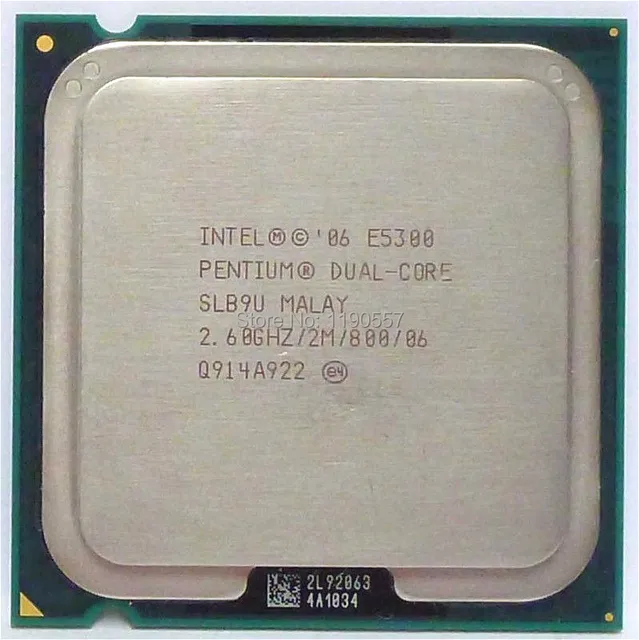 8 micron BiCMOS process, 3.1 million transistors 8 micron BiCMOS process, 3.1 million transistors |
||||||||||||||||||||||||||||||||||||||||||||||||||
| Data width | 32 bit | ||||||||||||||||||||||||||||||||||||||||||||||||||
| Data bus width | 64 bit | ||||||||||||||||||||||||||||||||||||||||||||||||||
| Floating Point Unit | Integrated | ||||||||||||||||||||||||||||||||||||||||||||||||||
| Level 1 cache size | 8 KB 2-way set associative code cache 8 KB 2-way set associative write-back data cache |
||||||||||||||||||||||||||||||||||||||||||||||||||
| Physical memory | 4 GB | ||||||||||||||||||||||||||||||||||||||||||||||||||
| Multiprocessing | Up to 2 processors | ||||||||||||||||||||||||||||||||||||||||||||||||||
| Low power features |
|
||||||||||||||||||||||||||||||||||||||||||||||||||
| On-chip peripherals |
|
||||||||||||||||||||||||||||||||||||||||||||||||||
| Electrical / Thermal parameters | |||||||||||||||||||||||||||||||||||||||||||||||||||
| V core | 5V ± 5% | ||||||||||||||||||||||||||||||||||||||||||||||||||
| Minimum/Maximum operating temperature | 0°C — 70°C 75°C 80°C 85°C |
||||||||||||||||||||||||||||||||||||||||||||||||||
| Typical/Maximum power dissipation | 11. 9 Watt / 15.28 Watt 9 Watt / 15.28 Watt |
||||||||||||||||||||||||||||||||||||||||||||||||||
| Thermal Design Power | 14.6 Watt | ||||||||||||||||||||||||||||||||||||||||||||||||||
| Notes on Intel Pentium 60 MHz | |||||||||||||||||||||||||||||||||||||||||||||||||||
|
|||||||||||||||||||||||||||||||||||||||||||||||||||
Intel Pentium 60 — A80501-60microprocessors pictures
other microprocessors
|
Intel Pentium 60 — PCPU5V60 |
Intel Pentium 66 — A80501-66 |
|
Intel Pentium 66 — PCPU5V66 |
Intel Pentium 75 — A80502-75 |
|
Intel Pentium 75 — BP8050275 / BP80502-75 |
Intel Pentium 75 — PCPU3V75 |
|
Intel Pentium 90 — A80502-90 |
Intel Pentium 90 — BP80502-90 |
|
Intel Pentium 90 — PCPU3V90 |
Intel Pentium 100 — A80502-100 / A80502100 |
|
Intel Pentium 100 — BP80502-100 |
Intel Pentium 100 — PCPU3V100 |
Tel:+86 0755-83247530 Email:raymond@nbcpu. com
com
NBCPU All rights reserved..
0017
166 in terms of manufacturability seriously overtakes, its technological process is 600 nanometers, in comparison with 800 nanometers for a competitor Pentium 60
 Not far behind the Pentium 60 processor
Not far behind the Pentium 60 processor Comparison of instructions and technologies
| Technology or instruction name | Intel Pentium 166 | Intel Pentium 60 | Short description |
|---|---|---|---|
| SMM (System Management mode) | System control mode. |
Benchmarks
Overall Performance Rating
The rating can be calculated by an internal formula, taking into account all the data, such as benchmark scores, instructions, frequency, socket, number of cores and threads, temperature data, architecture, technology, year exit, and much more. The results of the overall rating showed that the Pentium 166 outperforms its rival Pentium 60 in most parameters. The Pentium 60 barely gains 8.26 points in comparison with the competitor.
The Pentium 60 barely gains 8.26 points in comparison with the competitor.
PassMark CPU Mark
Perhaps the most popular benchmark in Runet. It includes a wide pool of tests for a large-scale assessment of the performance of personal computers, including the processor. Diagnostics include floating point calculations, integer calculations, encryption, extended instruction checking, compression, game physics calculations, single-threaded and multi-threaded tests. In particular, it is possible to compare the obtained indicators with other configurations in a common database. Almost all of our processors have been subjected to PassMark tests. The Performance Test showed a clear advantage of the Pentium 166 processor (28 points) over the Pentium 60 (7 points). Pentium 60 with a score of 7 clearly loses in this test.
Cinebench 10 (32 bit) Single-threaded test
This benchmark for testing processors and video cards is already very outdated today. The test is performed on Windows, Mac OS X. Single — in its test uses only one core and one thread for rendering. MAXON appeared, it is based on the 3D editor Cinema 4D. Uses the method of geometric optics — ray tracing. It is possible to test many processor systems. The basic speed testing mode is working with light, simulating global illumination, spatial light sources, multilevel reflections, photorealistic rendering of a 3D scene, and procedural shaders.
The test is performed on Windows, Mac OS X. Single — in its test uses only one core and one thread for rendering. MAXON appeared, it is based on the 3D editor Cinema 4D. Uses the method of geometric optics — ray tracing. It is possible to test many processor systems. The basic speed testing mode is working with light, simulating global illumination, spatial light sources, multilevel reflections, photorealistic rendering of a 3D scene, and procedural shaders.
Cinebench 10 (32 bit) Multi-thread test
Multi Core version is another test variant in Cinebench R10 that already uses multi-thread and multi-core testing method. It should be noted that the number of threads in this version is limited to 16.
Cinebench 11.5 (64-bit) Multi-threaded test
Multi-threaded version of the CINEBENCH 11.5 benchmark — which can test the CPU to the fullest using all cores and threads. Unlike previous versions of the program, 64 threads will be involved here. Testing the Pentium 166 in the Cinebench R11. 5 benchmark gave 0.03 points, which indicates a higher performance of this model. While the Pentium 60 scores 0.01 points, it is far behind its rival in this test.
5 benchmark gave 0.03 points, which indicates a higher performance of this model. While the Pentium 60 scores 0.01 points, it is far behind its rival in this test.
Cinebench 11.5 (64-bit) Single-threaded test
Excellent multifunctional Cinebench 11.5 from Maxon. In this Single-Core variant, tests are performed using one core and one thread. His tests have not lost their relevance today. In testing, the ray tracing method is still used, a detailed 3D space is calculated with a large number of crystalline and translucent and glass balls. The result of the check is the «number of frames per second» parameter. The results of the single-thread test for the Pentium 166 in Cinebench 11.5 Single-Core showed high performance compared to the competitor, its score was 0.03 points. But the Pentium 60 itself, scoring 0.01 points in this test, is far behind it.
Cinebench 15 (64-bit) Multi-thread test
Multi-Thread version of Cinebench 15 — will test your system to the fullest, showing everything that it is capable of. All threads and CPU cores are enabled when rendering detailed 3D objects. The program is suitable for new multi-threaded CPUs from Intel and AMD, as it can use 256 computing threads. The Pentium 166, with a score of 2.94 points, unconditionally scores more points in the Multi-Core test from Cinebench 15. While its competitor, the Pentium 60, lags far behind with 0.73 points in the test.
All threads and CPU cores are enabled when rendering detailed 3D objects. The program is suitable for new multi-threaded CPUs from Intel and AMD, as it can use 256 computing threads. The Pentium 166, with a score of 2.94 points, unconditionally scores more points in the Multi-Core test from Cinebench 15. While its competitor, the Pentium 60, lags far behind with 0.73 points in the test.
Cinebench 15 (64-bit) Single-threaded test
Cinebench R15 is the most modern tester from the Finns from Maxon to date. With its help, they check the system: both CPU and video cards. For the CPU, the result of the calculation will be the number of PTS points, and for video cards, the value of frames per second. FPS. A complex 3D scene is being rendered with many light sources, complex objects and reflections. In the Single Core version of the program, only 1 thread is used in rendering. A single-threaded test of the Pentium 166 processor in Cinebench R15 shows its high performance, the result is 2. 94 points. Compared to it, its Pentium 60 competitor fails this test with a score of 0.73 points.
94 points. Compared to it, its Pentium 60 competitor fails this test with a score of 0.73 points.
Geekbench 4.0 (64-bit) Multi-threaded benchmark
Geekbench 4 64-bit multi-threaded benchmark. It is the device and operating system support that makes Geekbench benchmarks the most valuable at the present time. It’s In Geekbench 4 64-bit multi-core, the Pentium 166 received a score of 69.89, which is significantly higher than the Pentium 60. In this test, the Pentium 60 scores an extremely low score of 17.63 — compared to the Pentium 166.
Geekbench 4.0 (64-bit) Single-threaded test
Single-Core test uses 1 processor thread. The current single-threaded version of Geekbench 4 for testing home PCs and laptops. The program still runs on operating systems like its earlier versions: Mac OS, Linux, Windows. For the first time ever, iOS and Android smartphones are also supported in this version of the tester. The Pentium 166 scored higher in the Geekbench 4. 0 single-thread test, with a score of 70.33. But its competitor Pentium 60 is faring much worse — 17.63 points.
0 single-thread test, with a score of 70.33. But its competitor Pentium 60 is faring much worse — 17.63 points.
Geekbench 3 (32 bit) Geekbench 3’s
Multi-Core Test — can allow you to make a strong synthetic test of your processor and demonstrate the stability of your system.
Geekbench 3 (32 bit) Single-threaded test
The 32-bit version of the test loads no more than one thread and one processor core. The Geekbench multi-platform tester is often used to evaluate a Mac system, although it works on both Windows and Linux. The main purpose is to test the performance of the CPU.
Geekbench 2
In our archive you can find almost 200 processor models that have test results in this program. The old version of the Geekbench 2 program. Today there are more recent updates, relevant 4v and 5v.
X264 HD 4.0 Pass 1
In essence, this is a practical test of processor speed by transcoding HD video files to the new H. 264 format or the so-called MPEG 4 x264 codec. This test is faster in comparison with Pass 2, since the rendering occurs at a constant speed. An ideal test for many thread processors and many core ones. The number of frames processed per second is an indicator of the check. The MPEG 4 video processing speed of the Pentium 166 is much higher and amounts to 0.84 Frames/sec. But the Pentium 60 coped poorly with the task, its speed was 0.21 FPS.
264 format or the so-called MPEG 4 x264 codec. This test is faster in comparison with Pass 2, since the rendering occurs at a constant speed. An ideal test for many thread processors and many core ones. The number of frames processed per second is an indicator of the check. The MPEG 4 video processing speed of the Pentium 166 is much higher and amounts to 0.84 Frames/sec. But the Pentium 60 coped poorly with the task, its speed was 0.21 FPS.
X264 HD 4.0 Pass 2
This is a slightly different, slower test based on video file compression. You need to understand that the real task is being performed, and the x264 codec is used in a large number of encoders. As a result, we get a better quality video file. The same MPEG4 x264 codec is used, but the processing is done at a variable rate. The resulting value is also measured in frames per second. Therefore, the results of the audits realistically assess the effectiveness of the platform. When measuring the compression speed of a video file by a Pentium 166 processor in mpeg4 format, the result was 0. 18 Frames / s. Its competitor Pentium 60 showed a much lower video encoding rate compared to it — 0.05 FPS.
18 Frames / s. Its competitor Pentium 60 showed a much lower video encoding rate compared to it — 0.05 FPS.
3DMark06 CPU
This test is often used by gamers and overclockers and those who like to overclock the system. The CPUs are tested in 2 ways: the AI does the pathfinding and the other test simulates the physics engine using PhysX. Created using the DirectX library by Futuremark. Benchmark program for checking the video system, and CPU. The Pentium 166 performed significantly faster in the pathfinding and game physics tests, scoring 43.91 points. The Pentium 60 handled this task worse with 11.01 points.
3DMark Fire Strike Physics
We can say that about 2 hundred processors on our site have data in the 3DMark Physics test. This is a math test that makes calculations in game physics.
WinRAR 4.0
Everyone knows the file archiver. Checks were made under the control of the Windows operating system. The speed of compression by the RAR algorithm was evaluated; for this, large volumes of randomly generated files were taken. The resulting speed in the process of compression «kilobytes per second» — this is the test indicator. Pentium 166 has a clear advantage in WinRAR data compression and packing speed, the result of file processing was 24.23 Kb/s. The Pentium 60 lagged far behind it, the speed of which did not exceed 6.06 Kb / s.
The resulting speed in the process of compression «kilobytes per second» — this is the test indicator. Pentium 166 has a clear advantage in WinRAR data compression and packing speed, the result of file processing was 24.23 Kb/s. The Pentium 60 lagged far behind it, the speed of which did not exceed 6.06 Kb / s.
TrueCrypt AES
This is not exactly a benchmark, but the results of its use will help to evaluate the performance of the entire computer. The program can run on various Linux, Windows and Mac OS X operating systems. It so happened that support for this project was stopped on May 28, 2014. Our site demonstrates the results of encryption speed in Gb / s using the AES algorithm. The program includes the function of fast encryption of disk partitions.
Intel Pentium 60 processor — comparison, specifications and benchmarks
- Intel Pentium 60
- Characteristics
- Processor comparison
- Tests in benchmarks
- Games
- Description
Intel Pentium 60 general parameters: processor specifications, processor cache and memory, compatibility, peripherals, built-in modules, Intel Pentium 60 performance and other characteristics.
| Features | Meaning |
|---|---|
| General information | |
| Processor name | Intel Pentium 60 |
| Manufacturer | Intel |
| Processor category | For PC |
| Architecture code name: | P5 |
| Release date | 1993 |
Of.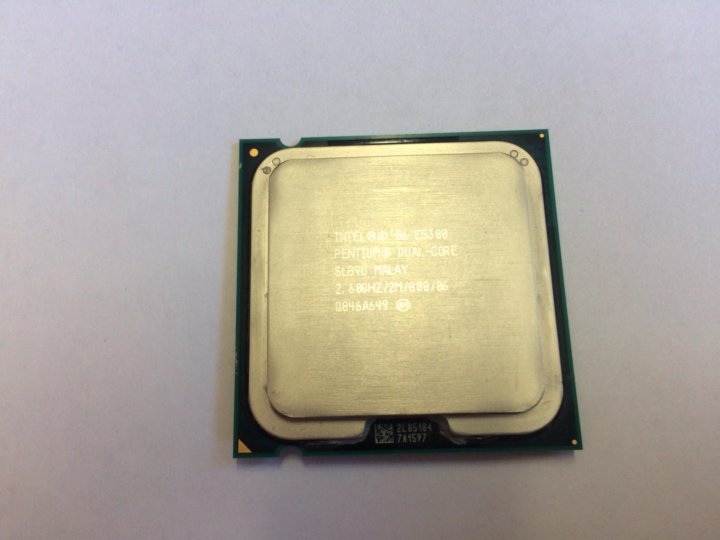 site site |
Link |
| Processor Specifications | |
| Core | 1 core |
| threads | 60 MHz |
| Turbo Boost&Core | |
| Tire | 800 nm |
| Number of transistors | 3 ppm |
| Maximum temperature |
|
| Processor cache and memory | |
| Level 1 cache | External |
| Compatibility & Peripherals & Built-in modules | |
| Socket | 15 W |
| Integrated graphics | |
| Technologies and instructions (virtualization, security) | |
| Technology and instructions * Specifications subject to change without notice | |
Enter processor name
Intel Pentium 60
vs
Enter processor name
A brief overview of the Intel Pentium 60 processor from Intel. Card issue date 1993 year.
This is a Desktop processor, codenamed P5 architecture, designed with 800 nm technology.
It has 1 core and 1 thread, clocked at 60 MHz, The processor has no «Turbo Boost&Core» technology to automatically increase the clock speed.
The multiplier is locked.
For compatibility, this processor is designed for Socket 4, with TDP 15 W,
The maximum temperature at which the Intel Pentium 60 processor can operate is 80 °C.
